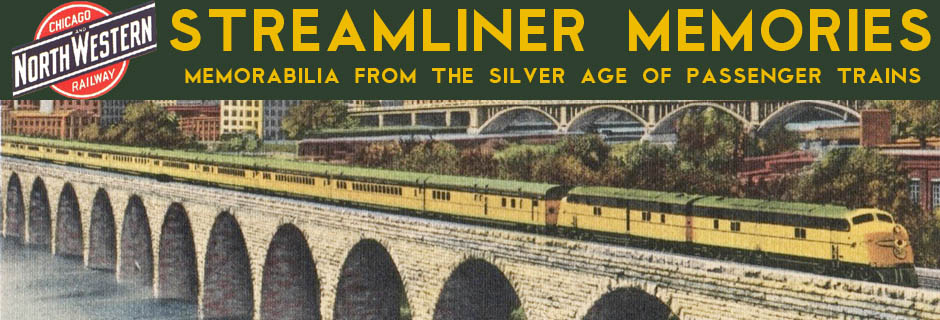The domeliner–a streamlined train with domecars–was the pinnacle of passenger train development. The railroads tried several new ideas after domes were developed, but only one of them–the Santa Fe hi-level cars–was successful. I’ll always feel that riding in a dome car was the most elegant form of land-based travel ever devised.
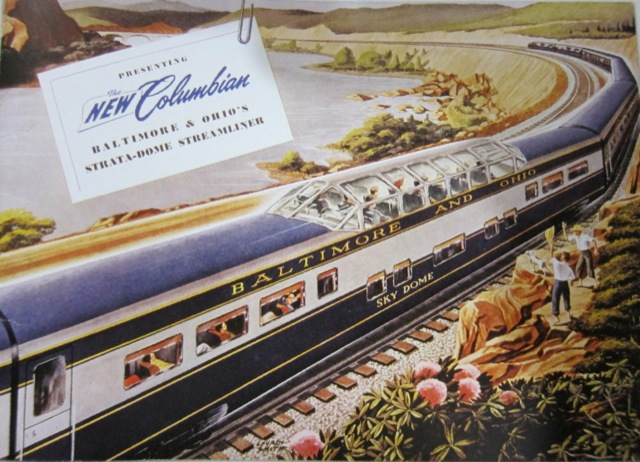
The Baltimore & Ohio was the first railroad to operate dome cars east of Chicago.
Yet dome cars were built for only about thirty trains. As rail patronage dropped off in the late 1950s and early 1960s, many railroads sold their dome cars, so another dozen or so trains became domeliners for a short time. Still, only a tiny minority of pre-Amtrak passenger trains ever operated with dome cars in the United States and Canada.
In all, 236 dome cars were built. Thirty of the domes extended the full length of the car. Another six extended most of the length and are sometimes called three-quarter-length domes. The remaining 200 are the conventional “short” domes.
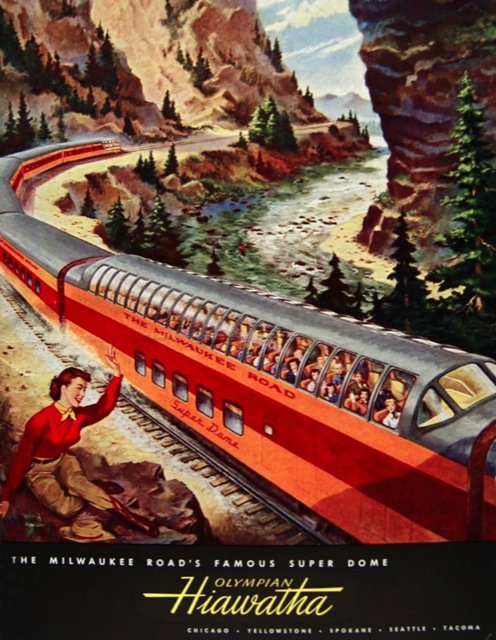
The Milwaukee Road was the first railroad to use full-length domes.
Budd built 157 of the domes, including 20 full-length domes. American Car & Foundry built 40 short domes, all for the Union Pacific Challenger and City trains. Pullman built 29, including 10 full-length domes. Southern Pacific built the six three-quarter-length domes by converting flat-topped Pullman cars, while the Burlington, as noted in a previous post, converted two flat-topped Budd cars into domes.
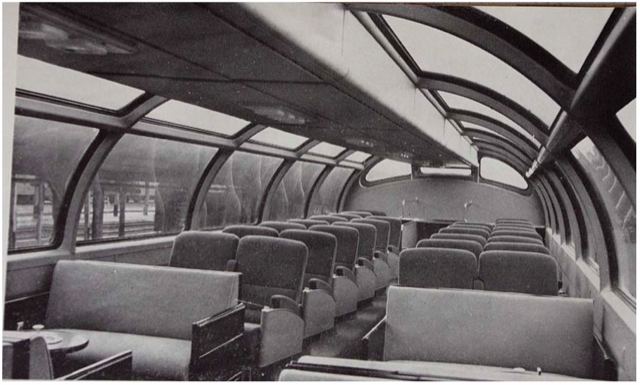
The Southern Pacific’s home-built three-quarter-length domes didn’t have a great forward view, but they had large windows and a downstairs lounge at one end with a cathedral ceiling.
As closely as I can determine, new dome trains were inaugurated or new dome cars were added to existing trains in the following order:
- December, 1947: Burlington’s Twin Zephyrs (five Budd short domes for each of two trains)
- 1948: Missouri Pacific’s Colorado Eagle (one Budd short dome for each of three trains)
- March 1949: The California Zephyr (five Budd short domes for each of six trains plus one spare)
- May, 1949: B&O’s Columbian
- September, 1949: Rio Grande’s Prospector (using three domes originally intended for the Chessie)
- June, 1950: Union Pacific’s Seattle-Portland train (using all four Train of Tomorrow domes)
- February, 1950: The Wabash Blue Bird (two Budd short domes for each of two trains)
- December, 1950: B&O Capitol Limited (using three domes originally intended for the Chessie)
- January, 1951: The Santa Fe Super Chief (one flat-glass Pullman short dome for each of six trains)
- 1952: Missouri Pacific’s Texas Eagle (five flat-glass Pullman short domes)
- 1952: The Ak-Sar-Ben Zephyr became a domeliner using cars pooled with the California Zephyr
- January, 1953: The Milwaukee Road Hiawatha and Olympian Hiawatha (ten Pullman full-length domes)
- February, 1953: Burlington’s Kansas City Zephyr and American Royal Zephyr (two Budd short domes for each of two trains)
- 1954: Santa Fe El Capitan, Chief, Kansas Citian, and Chicagoan (one Budd full-length dome for each of 14 trains)
- 1954: Northern Pacific’s North Coast Limited (four Budd short domes for each of six trains)
- April, 1955: Canadian Pacific’s Canadian and Dominion (two Budd short domes for each of 18 trains)
- May, 1955: Great Northern’s Empire Builder (three Budd short domes and one Budd full-length dome for each of five trains, with two short and one full-length spare)
- May-June, 1955: Southern Pacific’s San Joaquin Daylight, Shasta Daylight, and San Francisco Overland (one three-quarter-length dome for each of six trains)
- 1955: Union Pacific’s Challenger (one dome for each of five trains), City of Portland (three domes for each of five trains), City of Los Angeles (two domes for each of five trains), and City of St. Louis (two domes for each of five trains, all by ACF)
- October, 1956: Burlington’s Denver Zephyr (three Budd short domes for each of two trains)
Bold-faced train names list will be covered in more detail in future posts.
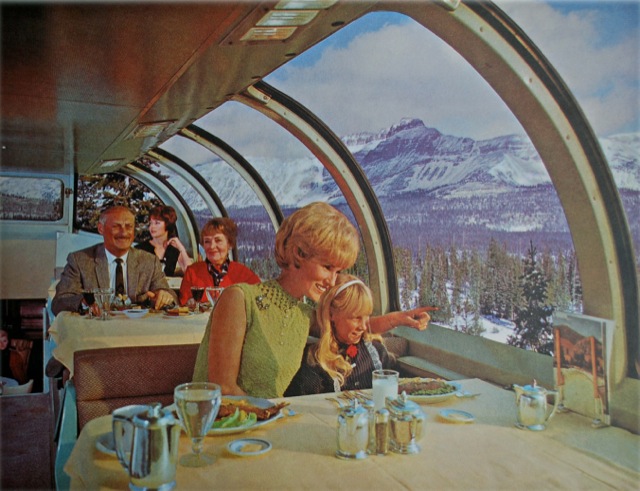
Perhaps influenced by the fact that it purchased the Train of Tomorrow, the Union Pacific was the only railroad to own dome-dining cars.
In 1958, Pullman apparently made the last dome car in the U.S. for the Wabash for use on the City of St. Louis, a train that was jointly operated with the Union Pacific. Other railroads that ran domes purchased from railroads that were reducing their passenger fleets included:
- Canadian National, which bought the Milwaukee’s domes for its Super Continental
- Illinois Central, which used former Missouri Pacific domes on it’s City of Miami and City of New Orleans
- Norfolk & Western, which borrowed domes from its Wabash subsidiary for the Powhatan Arrow
- Seaboard Coast Line, which used former B&O domes for its Florida Special and Silver Star
- Central of Georgia, which used two former Wabash domes on its Nancy Hanks
- Southern, which later used the same two former Wabash domes for the Crescent
- Rock Island, which used a former Chessie/D&RGW dome for the last few years of its Quad Cities Rocket.
In addition, during the 1960s, Northern Pacific leased some of its dome-sleepers in the winter for the Chicago-Florida trains City of Miami and South Wind, while the Great Northern operated the Western Star with one of the Empire Builder domes in the winters. Finally, after Amtrak took over, the Rio Grande–which initially declined to join–continued to use its share of California Zephyr domes for the three-day-a-week Rio Grande Zephyr.
